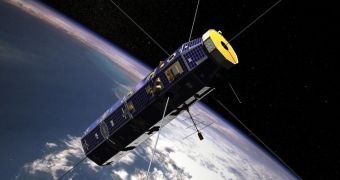New data from US satellites are revealing the true extent of the natural phenomenon called Schumann resonance. Until now, experts thought that it was confined to the atmosphere, but the new data indicate that it can also be detected from orbit.
The resonance is a metaphoric atmospheric heartbeat, scientists explain, that is produced by electromagnetic waves caused by lightenings. About 50 lightenings strike Earth every second, and each of them produces these waves.
The latter gather in the atmosphere, but are usually confined between the surface of the planet and a layer of the atmosphere located at an altitude of about 60 miles (100 kilometers). The fact that they are visible from space was therefore entirely unexpected.
What is interesting is that only electromagnetic waves of a particular wavelength contribute to the Schumann resonance. What separates them from the others is the fact that they can combine and mutually increase their strength.
By monitoring the properties of this natural phenomenon, it is possible for researchers to monitor Earth's weather and electric environment, and even the chemical composition of its atmosphere.
However, experts have always been aware of certain limitations in these measurements, such as for example the fact that the resonance could only be measured from the surface of the planet. The new study basically demonstrates that the phenomenon can be observed from orbit as well.
The data that led researchers to this conclusion were collected by the US Air Force's Communications/Navigation Outage Forecast System (C/NOFS) satellite. Its Vector Electric Field Instrument (VEFI) – the one responsible for the findings – was built by NASA.
“Researchers didn't expect to observe these resonances in space. But it turns out that energy is leaking out and this opens up many other possibilities to study our planet from above,” explains NASA Goddard Space Flight Center (GSFC) scientist Fernando Simoes.
He is the first author of the study detailing the discovery, which will be published in the December print issue of the esteemed scientific journal Geophysical Research Letters. The work already appeared in the November 16 online issue of the publication.
“Combined with ground measurements, [the new capability] provides us with a better way to study lightning, thunderstorms, and the lower atmosphere. The next step is to figure out how best to use that tool from this new vantage point,” the expert concludes.

 14 DAY TRIAL //
14 DAY TRIAL //